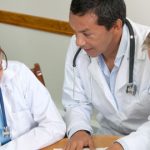Solutions
Properly designed learning strategies involving the community can inform practice-based learning and provide the foundation to redress institutional racism. Further, improved community and population health are higher-level educational outcomes that specifically aim to correct injustices in our social and medical systems. To achieve this, training programs need to emphasize an awareness not only of hard science but also of “contemporary and historical social injustices.”
On a global level, this has been addressed, for example, by administratively involving Indigenous communities in medical education. In Australia, rural community health is taught to third-year medical students who live for the entirety of that year within the community that they serve. In Canada, local Aboriginal and Francophone communities participate in medical student selection. And in the Philippines, medical students work in the community to solve public health problems, such as improving access to clean water.
Community-based review processes currently employed in the research arena, such as community-based review of research protocols, could equally lend themselves to implementation within the arena of medical curricular development.
Another novel strategy emphasizes the potential of artificial intelligence (AI) and machine learning. AI methodology is able to identify a discrepancy in understanding that exists between two parties, for example, the trainee and the faculty or the trainee and community. AI is particularly suited to the assessment of clinical reasoning by virtue of the ability to compute maps of thought processes and to allow feedback on knowledge gaps immediately.
This serves two goals. First, it functions as a measure of learning because it serves to discriminate between two groups over time. By capturing the strength of alignment between trainees and faculty, critical-thinking skills can be assessed.
Second, maintaining a record of the discrepancies captures systemic errors that need to be addressed for purposes of future quality improvement efforts. Machine learning may be leveraged to assess trainees with respect to community identified standards in addition to textbook learning.
At the level of the trainee, illuminating discrepancies in medical reasoning reflects systems-based learning, because it requires seeing interrelationships,
recognizing dynamic complexity and, ultimately, a refinement of medical meaning-making. At the institution level, it reflects practice-based learning and improvement, because it functions as a performance audit of the system that itself may serve to reveal implicit bias. If a group of trainees systematically treats one cohort of patients differently than another group, such an audit of behavior may reveal unconscious bias. At the community level, alignment of thinking between trainee and the local population, brings citizen power to medical education by providing attention to issues of marginalization and difference.
A third strategy concerns implementing reflection into curricular learning activities that specifically examine human rights abuses. This strategy can then be used as a mechanism for exposing class-based inequality.
A fourth strategy could provide a new format for educational conferences. Novel modes of collaboration could involve community testimonials paired with expert commentaries. In this manner, altruism, compassion and integrity may all be captured as meaningful learning objectives. These characteristics lend themselves to operationalization in this new format because the altruism and integrity per se are compatible with a compassion training effect.


